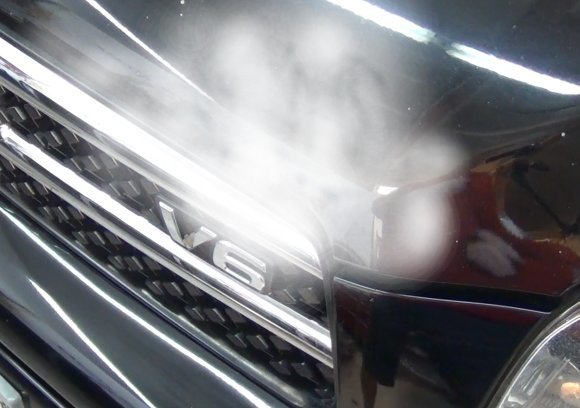I had the same problem with my 1993 honda civic with a 1.5 ltr engine. What was happening to my car was I had a leak in the head gasket. The coolant system was taking in exhaust from the valves, that is where the crack was. It would build up pressure in my coolant system around the fan sensor and the fan wouldn't come on all the time which would make the car run hot, but the pressure would also push the coolant into the overlow. When the car cooled off the air pocket inside the coolant system would dissipate and the system would pull the coolant back in from the overlfow res.
This is how you find out. Bring your car to someone you trust. Have them use the exhaust sensor from the STATE INSPECTION machine. Run your car with the radiator cover off, so you need to let your car cool first, take off the cap, then run the sensor over the top of your radiator when the car is at operating temp. It won't help when you first start your car, you have to wait until the engine block and the head heat up to see if they separate and cause a leak. If you get a reading of over 60 PPM, (which my car was over 300 PPM), then you have a leak in your head gasket. Make sure if you have a head gasket replaced that they put on NEW HEAD BOLTS. The head bolts are made of aluminum and stretch out after time, so even if you use the originals when replacing the head gasket, they will actually be too long since they stretched and you will have the same problem again.
I hope this helped you. Also, it is a good idea to jump the pins in the relay panel near the battery to see if your fan relay and fan sensor are working properly. If the fan comes on too late while driving the car won't recover to cool fast enough. I noticed this with hondas, once the engine is running hot you actually need to shut it down and let it cool before continuing.
Also, when the car seems to be running hot, check upper and lower radiator hoses, if they seem mushy while the car is hot, you need to use the bleeder valve while the car is running. Open up the valve slowly with either a box wrench or a socket wrench. Let it leak until you see a steady stream of coolant then tighten it back up again. Let the car cool. You will notice that the overflow res will be sucked back in to the radiator since you have now gotten rid of the air pocket that built up in your coolant system if you have a broken head gasket. The next day you will see that your hoses will be rock hard when the car is at operating temp. If this is the case, then you have rid your system of an air blockage that kept the fan from coming on. Do this again every time you notice mushy hoses when the engine is at operating temp or engine running hot. If it happens often, then its time for that head gasket job. DO NOT USE STOP LEAK! Good luck. Also, if you notice the car running hot, turn your heat on full blast. It will help cool the engine as a secondary radiator. TURN YOUR AC OFF TOO!
Sunday, June 24th, 2007 AT 1:39 PM



